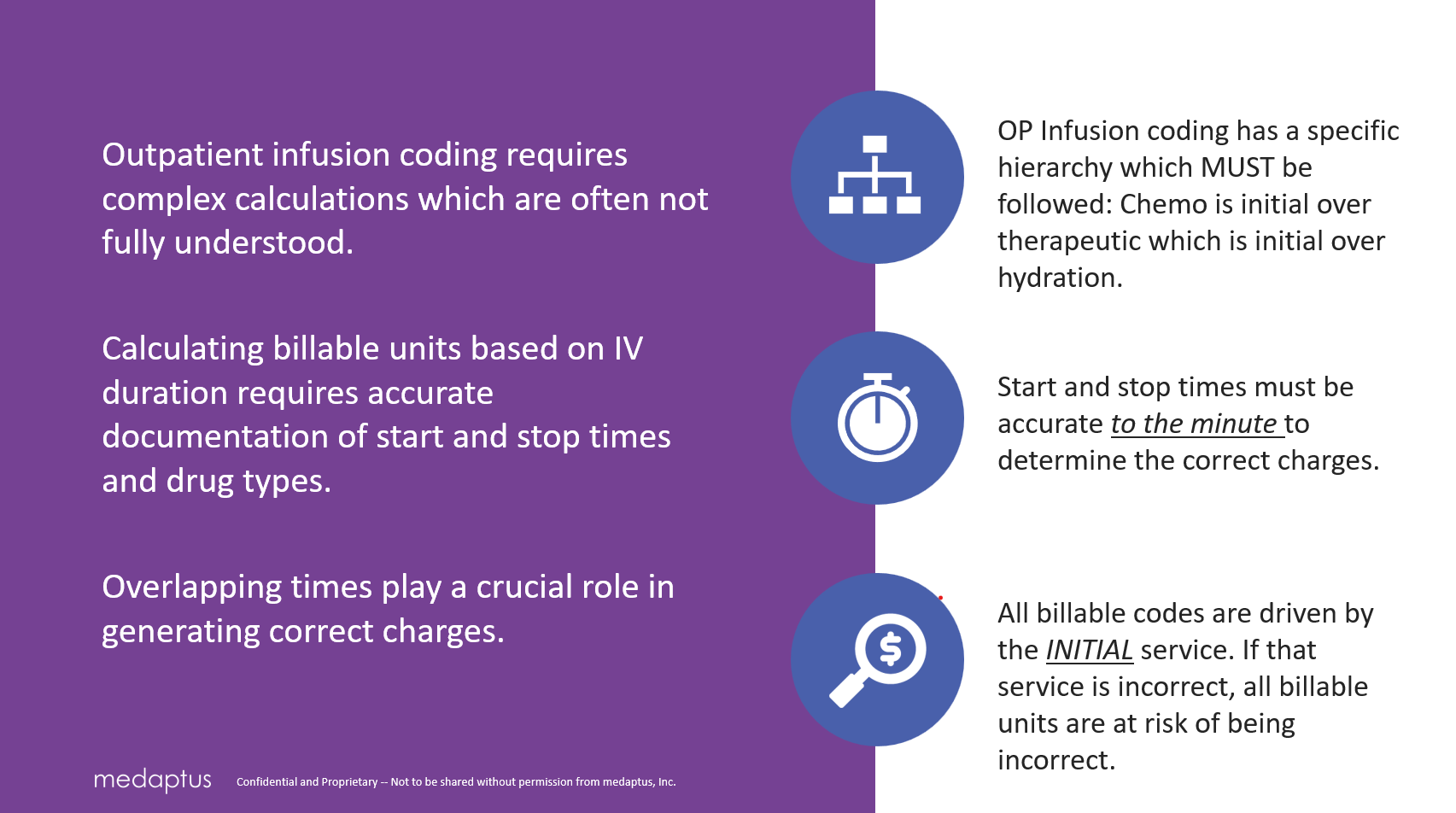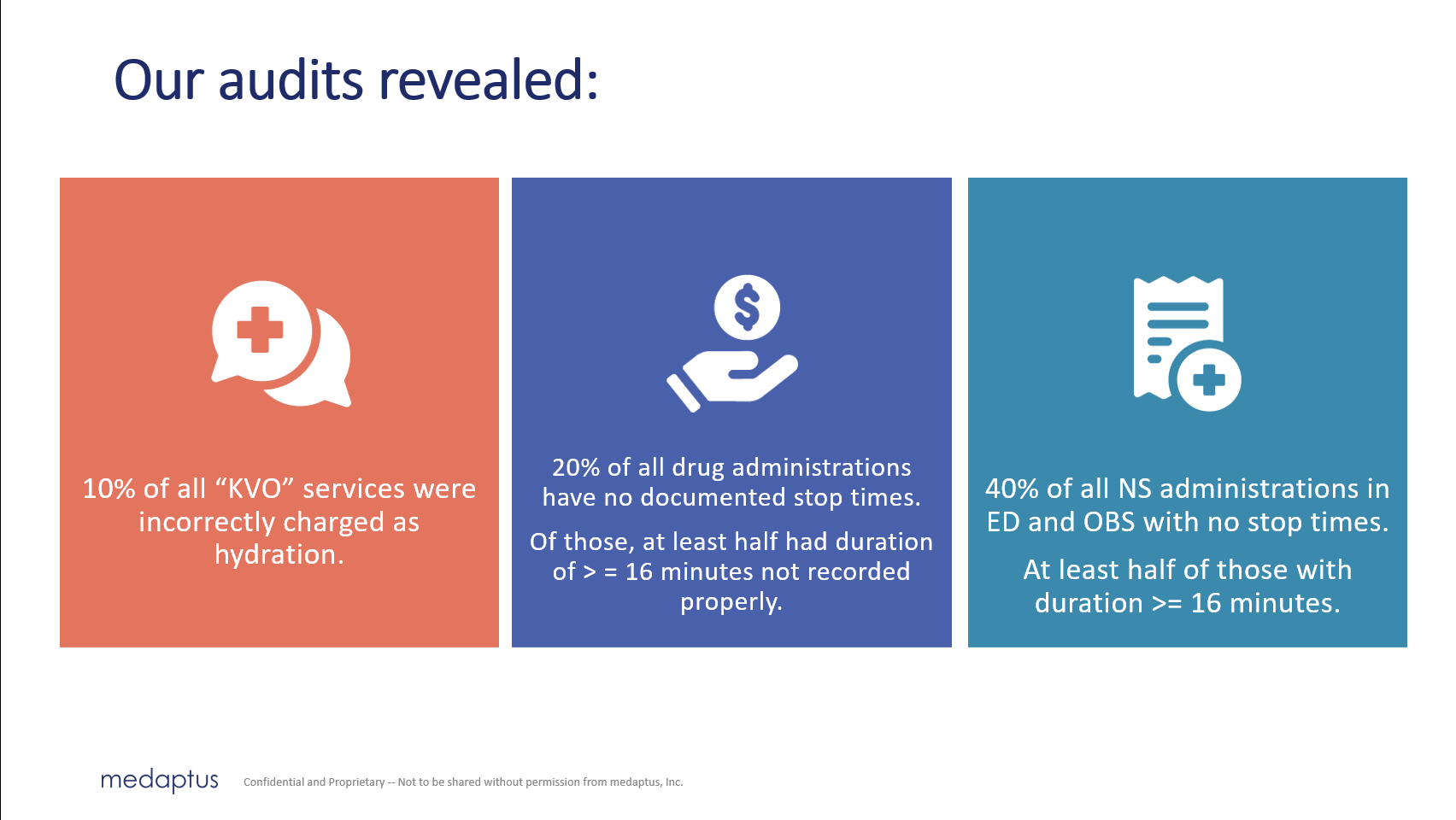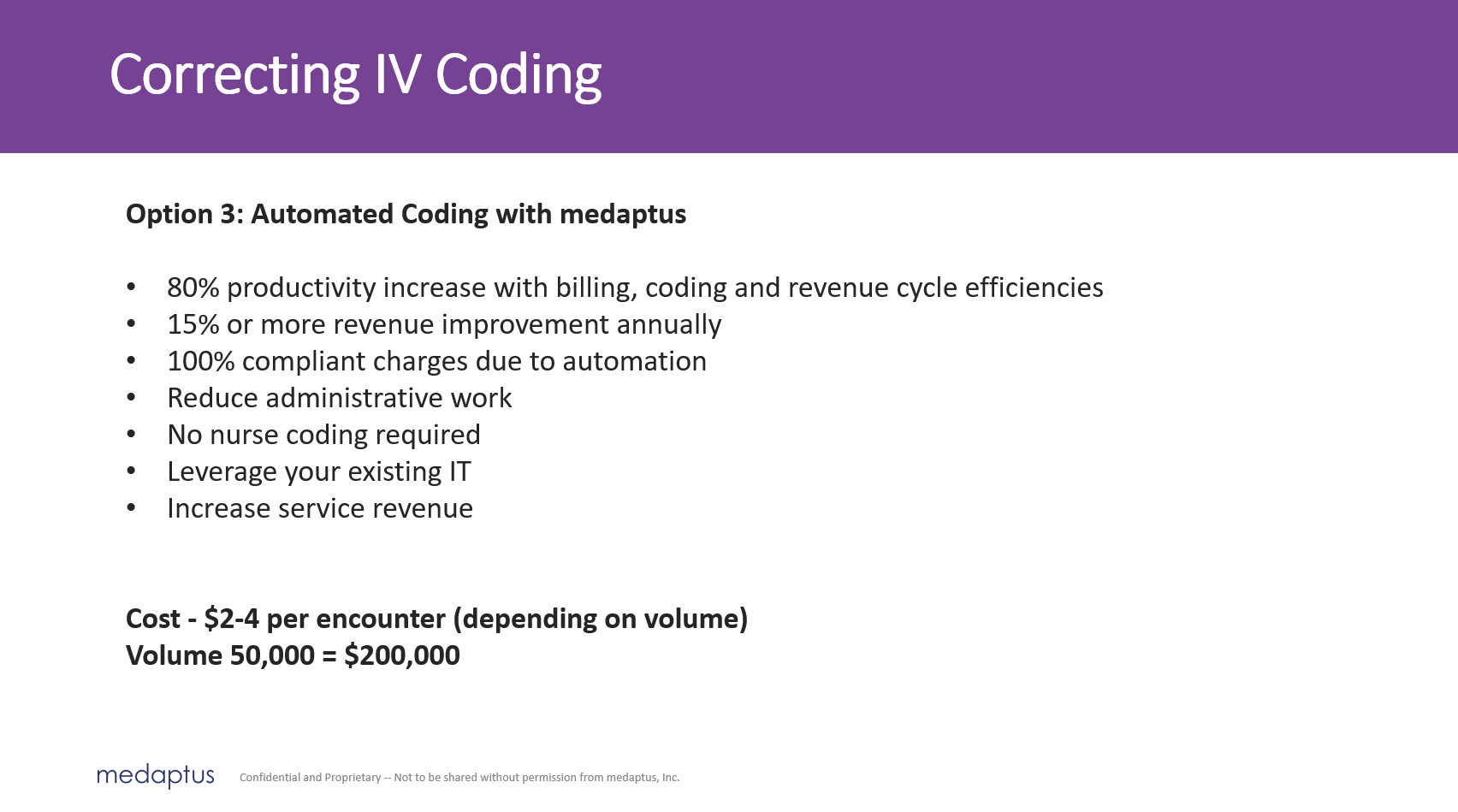Do you know that most healthcare organizations are coding outpatient infusion services incorrectly, leaving a ton of revenue on the table?
We audited and found that many organizations (90%+) had infusion errors. Most are due to incorrect documentation and missing stop times.
That’s why our Product Director, Gary Bernklow was invited to speak at KAHIMA’s business meeting and educational session on February 21st. Gary spoke on a very important topic – outpatient infusion billing and why it is it is so complex. Gary also covered topics like the most common billing errors we see in audits and how Medaptus can help organizations just like yours boost their revenue.
Gary started the session with some introduction questions to gage the audience’s familiarity with outpatient infusion billing and why it is so difficult to code these infusions manually:
- Complex Calculations: Infusion billing requires a lot of significant calculations to bill for the services you’re offering.
- Too much manual work: Coders often must review every single charge, which means they’re wasting a lot of time unnecessarily.
- Missing information: Missing documentation or data means providers cannot bill for all the infusion services they delivered.
- Lack of training: Nurses are often doing this work but are not trained to do so.
One of the other important reasons why outpatient infusion coding is more complex is because it is time-based. The longer the drug is infused, the more units can be charged. But these start and stop times must be accurately recorded, or you cannot bill for a longer infusion. There is also a specific hierarchy that must be followed: chemotherapy over therapeutic over hydration. That designation is responsible for the “initial” code, from which all others are derived.
Drugs infused at the same time, or overlapping times have specific rules. If an IV is done via multiple sites, there are different rules for that. Documentation can sometimes not be complete or accurate, which adds a whole new layer of challenges.

Medaptus often conducts audits for potential customers to uncover how they’re doing with their infusion billing, and we found that 90% of all organizations had outpatient infusion coding errors, the lowest error rate was 35% of encounters, the highest was a 75% error rate and only one organization had no coding errors but had 12 full-time coders reviewing 30K encounters annually (less than 10 per day average).

Common infusion coding issues
Now that you know a lot of organizations have trouble with infusion billing, what are the most common mistakes to look out for?
The most common errors we found involve inaccurate event times. For instance, not documenting the stop time of an IV drug administration. This could cost you about $30 regardless of the drug that has been infused. Another common mistake is selecting the wrong type of initial infusion. The initial service is not necessarily the first or earliest infusion, it should be determined by the reason for the service.
We have also seen that there might be a tendency to “round” the duration calculation. If the duration is not accurate to the minute, the coding calculation will not be accurate. For example, if an infusion lasts 16 minutes, a nurse doing this might just round down to 15 minutes for documentation, which results in inaccuracy and lost revenue.
The last mistake we commonly see is that there is a very good chance your coders or nurses might not be charging overlapping or concurrent infusions accurately. Another example: a hydration service is not billable if it is concurrent with any other IV drug administration. This leads to overcharging of billable units, and you’re in serious trouble if a RAC audit comes your way.
Correcting the problem
How do organizations address these potential problems? Are your administrators even aware of these issues and that there might be a problem? Surprisingly, even experienced coders might not be aware of the specialized nature of IV coding. There are a few options that Gary discusses:
- Option 1: Hire more coders = average cost of $300,000.
- Option 2: Purchase smart pumps and automation investment = New “Smart Pumps cost about $5K per pump + 2500 hours + $125K + 20 pumps + automation = $225,000.
- Option 3: Automated coding with Medaptus:
 Then, Gary highlighted a success story about one of our customers and how we helped them automate 100% of their infusion charges, stay 100% compliant and reduce their charge lag to just three days.
Then, Gary highlighted a success story about one of our customers and how we helped them automate 100% of their infusion charges, stay 100% compliant and reduce their charge lag to just three days.
As you can see, outpatient infusion coding is extremely complex, but luckily there are solutions out there to help. Not sure where to start? Check out our build vs. buy article to help you understand the pros and cons of automating and building something like this for yourself, or why you might want to consider an out-of-the-box solution like medaptus. Get started streamlining your complex billing processes today.
Get the latest updates and news delivered to your inbox.
Subscribe to our newsletter today.




